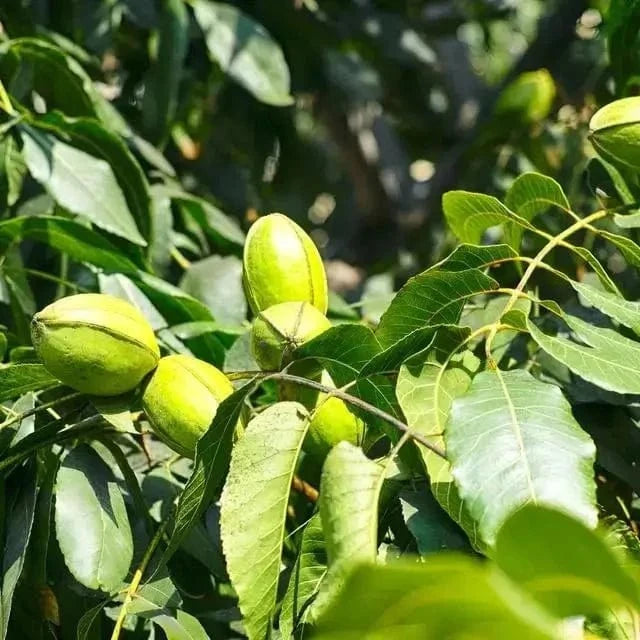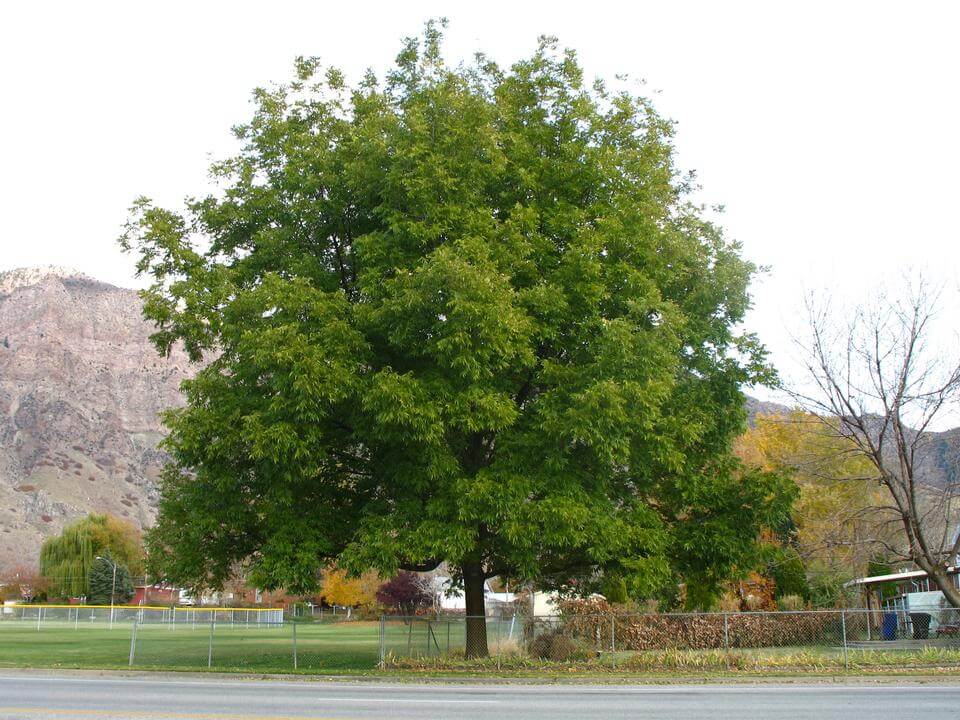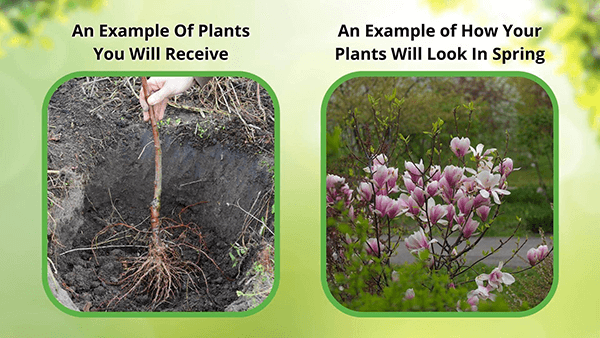Pecan Tree
Pecan Tree
| Order | Percentage Discount | ||
|---|---|---|---|
| 2-5 | 25% Off | ||
| 6-10 | 30% Off | ||
| 11-25 | 35% Off | ||
| 26-50 | 45% Off | ||
| 51+ | 65% Off | ||
Couldn't load pickup availability
5-7 Days
Over 25 Feet
Full Sun
4-9
Nut
Bare-root
AZ. HI. MS. TX. NM.CA
Pecan Tree - Carya Illinoinensis
The Pecan Tree is a majestic and iconic tree native to North America. It is known for its beautiful foliage, delicious nuts, and importance in the region's history and culture. In this product page, we will explore the tree in more detail, including its physical characteristics, growth habits, and benefits for the landscape.
Physical Characteristics
The huge tree can grow up to 130 feet tall in the wild. Its bark is smooth when young but becomes ridged and furrowed with age. The leaves are alternate, with each leaflet being 3 to 8 inches long. In the Fall (End of October), the foliage turns golden-yellow.
Pecan Tree's Growth
The slow-growing tree reaches maturity at ten years old but can produce nuts at a young age. It prefers well-drained soil and total sun exposure and can grow in diverse soil types, including clay, loam, and sand. The tree is also known for its deep taproot, reaching depths up to 20 feet.
Benefits
This tree is a valuable addition to any landscape. It provides shade, aesthetic beauty, and a source of delicious nuts. The tree also has significant ecological benefits, such as providing a habitat for wildlife and improving air and water quality. Additionally, the tree has cultural significance; it's been used for food and medicine by Native American tribes for centuries.
Maintenance
The tree requires regular maintenance to ensure its health and longevity. The tree needs regular watering, especially during the hot summer. Fertilization can also be beneficial in promoting healthy growth and nut production. This tree is beautiful and valuable, and it is a lovely and valuable tree with significant ecological, cultural, and aesthetic benefits. It requires regular maintenance and care, but the rewards are worth the effort.
This Is How Your Plants Will Look upon Delivery
Bloom/Foliage Color
Green
Shipping date depends on the date displayed and chosen when you order from the product's page.
We only accept returns on plants verified dead. If you think your plants have died, we offer a 1 year warranty, please use use this File a Claim Link to verify dead plants and start with return warranty process.




